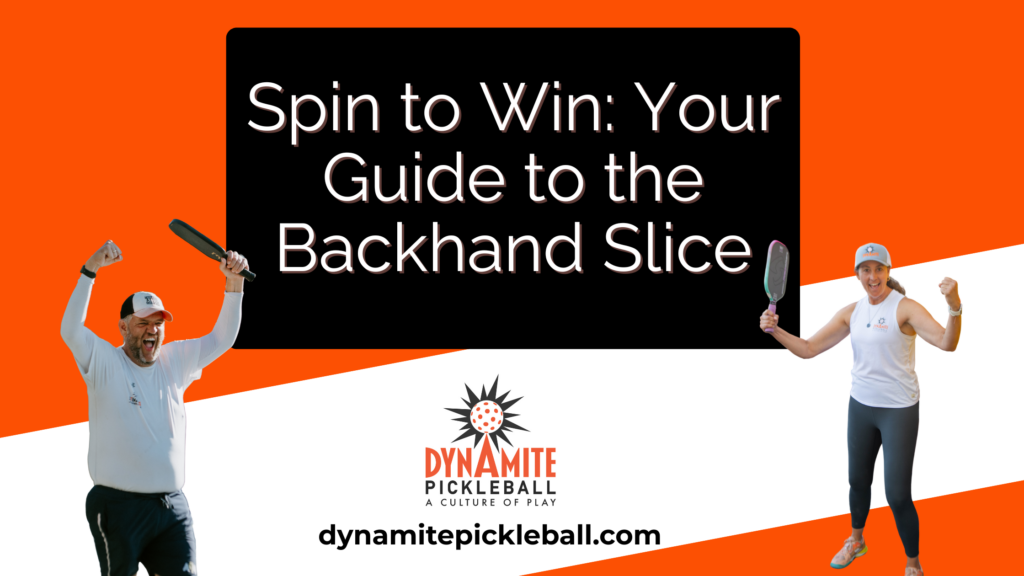
🔪 Backhand Slice: The Underrated Knife in Your Pickleball Toolbox
If the forehand slice is your butter knife—smooth and reliable—then the backhand slice is your steak knife: sharp, precise, and just a little intimidating.
Most players treat the backhand slice like a last resort. But when used intentionally and confidently, it can transform your returns, set up offensive opportunities, and help you control points with surgical precision.
🔁 Why You Should Slice Your Backhand Return
Let’s set the scene: your opponent rips a serve deep to your backhand. You panic, throw up a weak floater, and scramble to the kitchen while praying they don’t drive it down your throat.
Now imagine this instead: you step in, carve a crisp slice that skids low, lands deep, and buys you time to take center court. They’re now the ones scrambling. That’s the power of a backhand slice.
Used on the return of serve, the backhand slice:
- Keeps the ball low and unattackable
- Gives you more time to advance
- Throws off rhythm and tempo
- Creates uncomfortable spin your opponent must handle
🔑 The Key Ingredients for a Killer Backhand Slice
👣 Footwork + Spacing = Balance & Power
First, don’t get lazy. A solid backhand slice starts with proper spacing. That means early movement to get around the ball and avoid being jammed. Create room so you can turn your shoulders, plant your feet, and close your stance (back shoulder pointing toward the net).
🔄 Paddle High, Shoulder Low
- Get your paddle up early, around chest or shoulder height.
- Drop your non-dominant shoulder to create a strong angle downward.
- Your paddle should follow a slight diagonal path, not a straight chop. Think finesse, not axe murderer.
🌀 Slice with Style—Nike Swoosh It
You’re not just swiping at the ball. Think of tracing a Nike swoosh—down and across with a bit of curve. This creates controlled backspin and makes your slice stay low and skid. You’re not hitting hard—you’re hitting smart.
🎯 Stay on the Ball
Hold the ball on your paddle longer than you think. This isn’t a flick—it’s a guided carve. That longer contact helps with spin control and placement. Your goal is to “feel” the ball leave your paddle, not slap it away.
🚶♂️ Step Into It With Confidence
Use your legs! A good backhand slice has weight transfer. Step forward with your opposite foot (right foot if you’re right-handed), and move through the shot. Passive slices pop up. Confident slices bite.
💡 When to Pull Out the Backhand Slice
✔️ On return of serve (especially deep and wide serves)
✔️ As a counter when pulled off the court
✔️ When resetting dinks with disguise
✔️ To vary pace and create discomfort
🚀 Final Word
Your backhand slice doesn’t have to be flashy to be effective. It just has to be intentional. When mastered, it becomes one of your best tools for dictating pace, positioning, and point structure. You don’t need to blast the ball—you just need to slice it clean and leave your opponents scrambling.
So next time that serve hits your backhand corner—don’t panic. Slice it. Own it. And watch the balance of power shift in your favor.
Want to watch a video on it? Go to our YouTube channel where you can view this video and many more. Subscribe and like as we are adding more content everyday.

